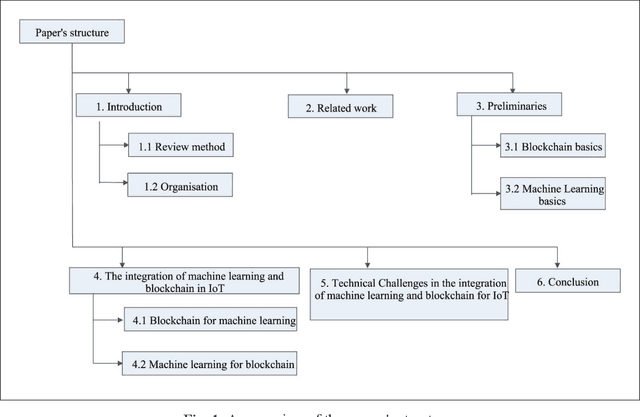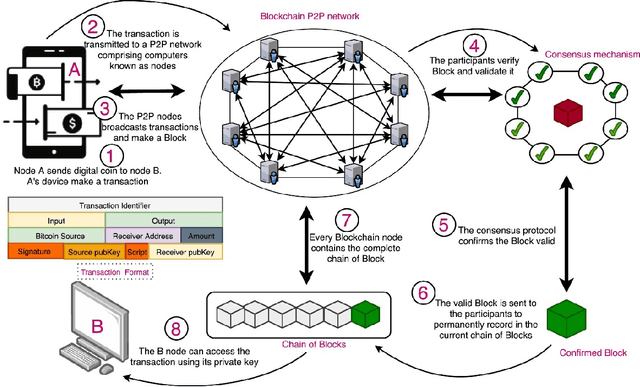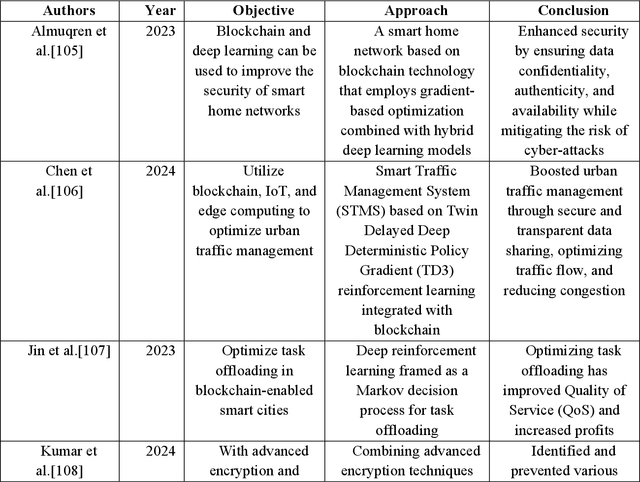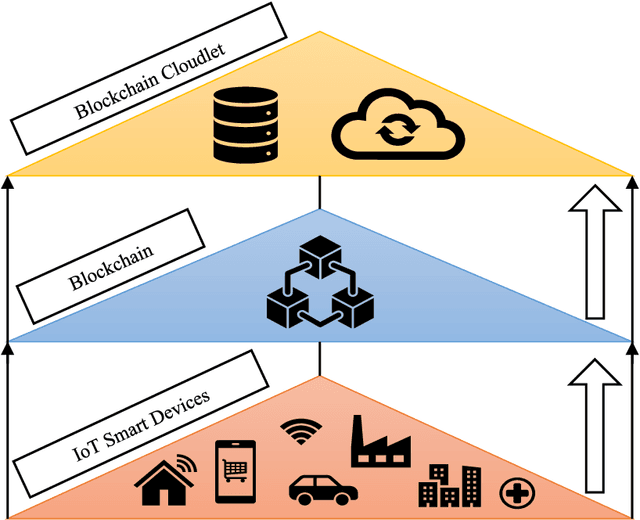Leila Amini
Artificial Intelligence for Secured Information Systems in Smart Cities: Collaborative IoT Computing with Deep Reinforcement Learning and Blockchain
Sep 24, 2024



Abstract:The accelerated expansion of the Internet of Things (IoT) has raised critical challenges associated with privacy, security, and data integrity, specifically in infrastructures such as smart cities or smart manufacturing. Blockchain technology provides immutable, scalable, and decentralized solutions to address these challenges, and integrating deep reinforcement learning (DRL) into the IoT environment offers enhanced adaptability and decision-making. This paper investigates the integration of blockchain and DRL to optimize mobile transmission and secure data exchange in IoT-assisted smart cities. Through the clustering and categorization of IoT application systems, the combination of DRL and blockchain is shown to enhance the performance of IoT networks by maintaining privacy and security. Based on the review of papers published between 2015 and 2024, we have classified the presented approaches and offered practical taxonomies, which provide researchers with critical perspectives and highlight potential areas for future exploration and research. Our investigation shows how combining blockchain's decentralized framework with DRL can address privacy and security issues, improve mobile transmission efficiency, and guarantee robust, privacy-preserving IoT systems. Additionally, we explore blockchain integration for DRL and outline the notable applications of DRL technology. By addressing the challenges of machine learning and blockchain integration, this study proposes novel perspectives for researchers and serves as a foundational exploration from an interdisciplinary standpoint.
CNN-based Labelled Crack Detection for Image Annotation
Aug 21, 2024



Abstract:Numerous image processing techniques (IPTs) have been employed to detect crack defects, offering an alternative to human-conducted onsite inspections. These IPTs manipulate images to extract defect features, particularly cracks in surfaces produced through Additive Manufacturing (AM). This article presents a vision-based approach that utilizes deep convolutional neural networks (CNNs) for crack detection in AM surfaces. Traditional image processing techniques face challenges with diverse real-world scenarios and varying crack types. To overcome these challenges, our proposed method leverages CNNs, eliminating the need for extensive feature extraction. Annotation for CNN training is facilitated by LabelImg without the requirement for additional IPTs. The trained CNN, enhanced by OpenCV preprocessing techniques, achieves an outstanding 99.54% accuracy on a dataset of 14,982 annotated images with resolutions of 1536 x 1103 pixels. Evaluation metrics exceeding 96% precision, 98% recall, and a 97% F1-score highlight the precision and effectiveness of the entire process.
 Add to Chrome
Add to Chrome Add to Firefox
Add to Firefox Add to Edge
Add to Edge